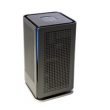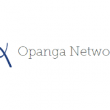

One of the biggest discussions as new technologies are evolving is the issue of cybersecurity. In a world where everyone is interconnected and mobile applications practically run our everyday lives, how do you keep users protected from hackers? (more…)
November 1, 2018
Posted by: Anasia D'mello

Calix, Inc. has launched the Calix GigaSpire powered by EXOS, the Experience Operating System. Subscribers are spending more than $2 billion (€1.75 billion) each year with consumer electronics retailers in a quest to improve their Wi-Fi and smart home connectivity. (more…)
Posted by: Anasia D'mello

In recent years the telecoms industry has scrutinised, debated, forecast and developed a huge variety of IoT use cases, as well as outlining the benefits they promise business, industry and society, and the opportunities for monetisation they present to a sector undergoing radical digitalisation. (more…)
Posted by: Anasia D'mello

The growth in Wi-Fi continues unabated, with increasing volumes of Wi-Fi devices and traffic, an adoption breakthrough in Next Generation Hotspot (NGH) Passpoint, and increasing confidence around the commercial deployment and specification of next generation technology Wi-Fi 6 (802.11ax). (more…)
Posted by: Anasia D'mello

The Petroleum Engineering Department at Texas Tech University conducted testing on the Gas Activated Systems suite of cloud-based fugitive hydrocarbon detection tools. DetectSys–a system utilising breakthrough multi-species gas quantification in a single sensor–complete with geolocation and long-range wireless communications, was exposed to methane in field-encountered conditions. (more…)
October 31, 2018
Posted by: Anasia D'mello

A new report from Juniper Research has revealed that 775 million consumer vehicles will be connected via telematics or by in-vehicle apps by 2023, rising from 330 million vehicles in 2018. This is an average annual growth of 18.7% over the next 5 years. (more…)
Posted by: Anasia D'mello

Nowadays, we see a new battle arising in the IoT domain. It seems that after years of false promises, the IoT is becoming a viable market and all the tech giants want a piece. (more…)
October 30, 2018
Posted by: Anasia D'mello

The Supervisory Board of Software AG has appointed John Schweitzer, 50, as the new chief customer officer (CCO) and member of the executive board of the company. The appointment take effect on November 1st, 2018. (more…)
October 26, 2018
Posted by: Anasia D'mello

Opanga Networks is extending its partnerships with major mobile network providers worldwide to enable 5G services as bandwidth demand continues to double year-over-year. (more…)
Posted by: Anasia D'mello

Cloud security solutions provider, Armor, and OpenKey, an industry standard for universal mobile key in hotels, have described how Armor is providing OpenKey with significant cost savings and “robust security” as the company expands domestically and internationally. (more…)
Posted by: Anasia D'mello